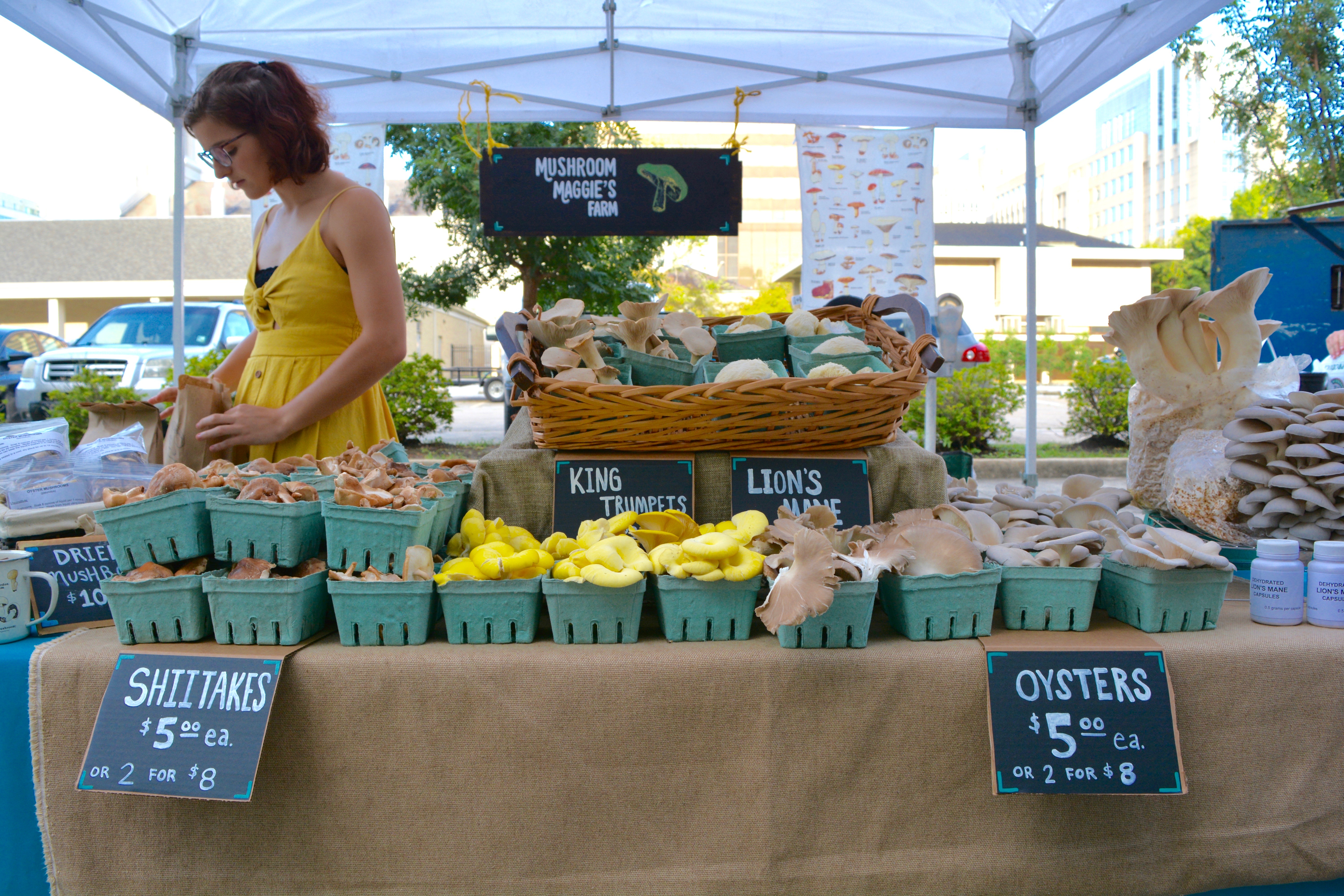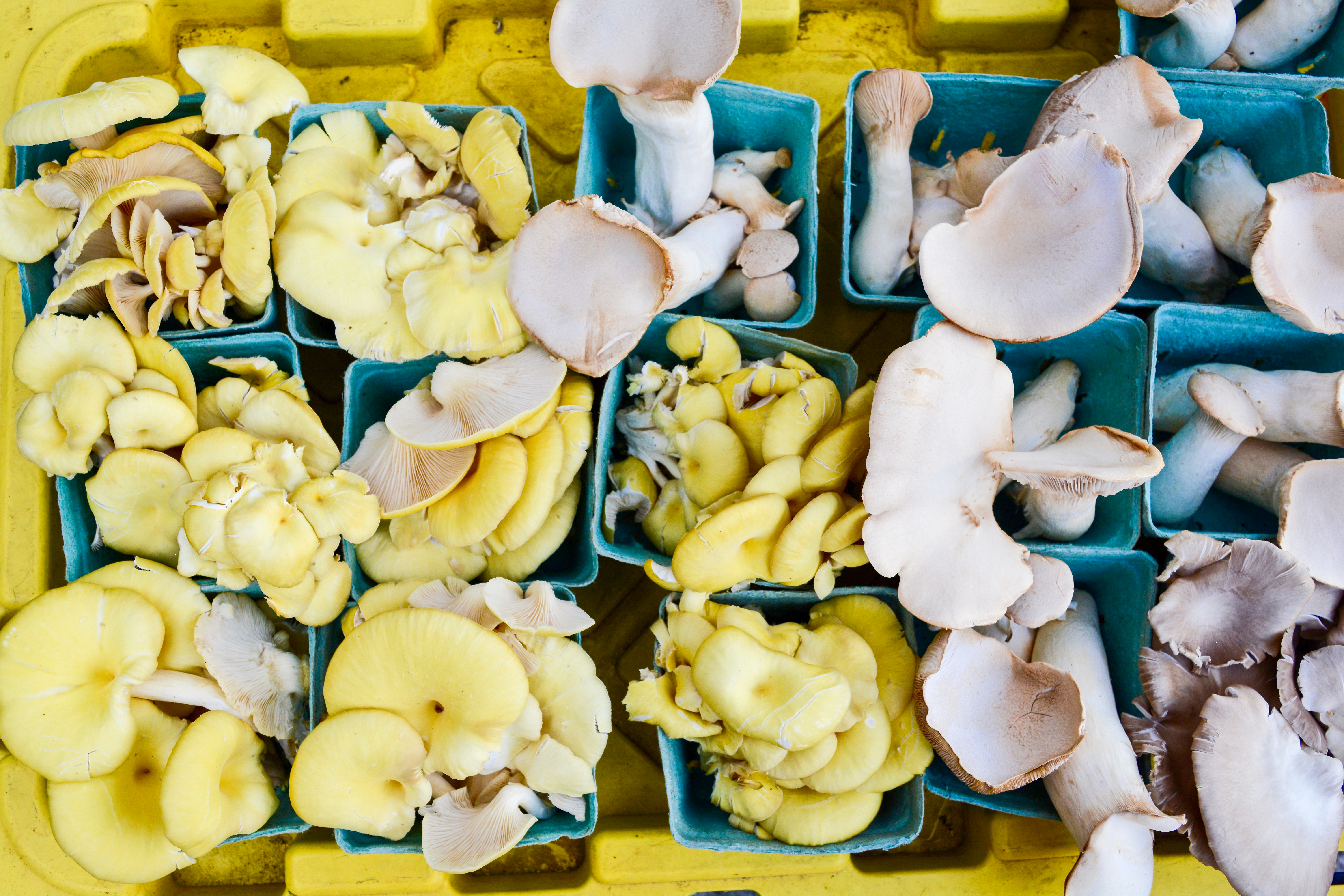
Local fungi farm brings wide variety of edible shrooms to chefs and foodies
They look like edible works of art.
Lion’s Mane’s delicate frills cascade like waterfalls. Large and meaty, the white King Trumpets promise umami-rich flavor. Shiitake and Chestnut are here, too; the reliable workhorses of the culinary mushroom world come in all sizes and shapes. Sprawled across the table at the Red Stick Farmers Market, these four varieties of curvaceous oyster mushrooms are almost too pretty to eat.
They also aren’t your ordinary fungi—they’ve been grown for maximum flavor and health benefits under meticulous conditions at Mushroom Maggie’s Farm in St. Francisville.
|
|
Launched early this year, Mushroom Maggie’s Farm is the brainchild of husband-wife team Cyrus Lester and Maggie Long, who followed a dream of owning their own boutique agricultural operation.
A few years ago, the two got married and moved to a parcel of land that Lester’s family owned in St. Francisville. Months of research led them to the idea of growing mushrooms. When done right, they thought, a farmer could make a decent profit on gourmet fungi because it requires fewer inputs and less physical space than vegetables or livestock. It also didn’t hurt that no one else in the region was growing these types of mushrooms.

“We really did our homework,” Lester says. “We read everything we could get our hands on and talked to a lot of people.”
Louisiana mushroom farmers were generous with their advice, the couple says. “It’s a really nice tight-knit community of people,” Lester says.
Response to the business has surpassed expectations. Within seven months of opening, Lester and Long are now supplying gourmet mushrooms to more than 20 local restaurants and selling direct to consumers every Saturday at the Red Stick Farmers Market. Currently, they produce about 250 pounds of mushrooms a week, but that weekly amount will soon double to 500 pounds after they complete a physical expansion.
While rosy now, the journey to building a successful mushroom farm has been hard fought. Last year, after working 16-hour days, seven days a week for 18 months, Mushroom Maggie’s Farm experienced a tragedy. Lester was sterilizing equipment when a faulty hose caused two propane gas tanks to explode. Lester had third-degree burns on his face and arms, and the mushroom barn they’d worked so hard to outfit was destroyed.
“It was really traumatic, but it was kind of a blessing in disguise,” Lester says. “It allowed us to experience unbelievable support from friends and family in helping us rebuild.”

Today, their operation consists of an area to create substrate, or the natural material in which the fungi’s cells form. Lester and Long make it from a combination of recycled sawdust, soybean hulls and rice bran, and other Louisiana agricultural waste products. They add water to bring the moisture content up, bag the material and steam-sterilize it to kill bacteria, mold or fungal contamination. Once it cools down, they bring it into their clean lab, where it’s inoculated with spawn, the seed of different types of mushrooms.
After inoculation, the substrate goes into the colonization room for different lengths of time depending on the variety. Finally, it’s off to the fruiting room where the mushrooms bloom and grow.
In addition to farmed mushrooms, the couple occasionally sells fresh foraged seasonal chanterelles. They also dehydrate some of the mushroom crop so consumers can reconstitute the mushrooms at their convenience.
The medicinal side isn’t lost on the farmers either.
“Mushrooms have a lot of health benefits,” Lester says, including heart health and controlling diabetes. “We’re dehydrating and grinding some of our Lion’s Mane for sale in capsule form.” Find Mushroom Maggie’s Farm on Facebook.
This article was originally published in the October 2018 issue of 225 Magazine.
|
|
|
